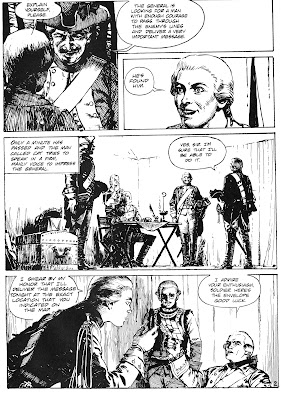Book Review: 'Swampworld West' by Perry Chapdelaine
2 / 5 Stars
Perry Chapdelaine (1925 - 2015) was an American high school teacher and science fiction fan when, in 1950, he read L. Ron Hubbard's book 'Dianetics: the Modern Science of Mental Health'. Chapdelaine became an enthusiastic supporter of Dianetics, serving as an 'auditor' and running centers for the teaching and promotion of the topic. In 1954, following waning public interest in Dianetics, Chapdelaine reduced his involvement in the movement, but maintained his interest in science fiction.
A comprehensive account of Chapdelaine's life, with an emphasis on his involvement in Dianetics and Scientology, is posted to the 'scientolipedia' website.
Chapdelaine published a number of stories for the digest market during the late 1960s and early 1970s. He also published, in the UK, two novels, 'Swampworld West' (1974) and 'The Laughing Terran' (1977). Neither was released in the US.
'Swampworld West' (156 pp.) first was published in hardback in 1974 by The Elmfield Press. The cover artist is uncredited. A paperback edition was issued in the UK by Coronet Books in 1976.
The eponymous Swampworld is a planet, the entire surface of which is covered by water to a depth of four feet. Occasional outcroppings of dry land offer some degree of variety from the seemingly limitless vistas of swamp. The planetary ecology has, unsurprisingly, evolved life forms at home in shallow water; among these life forms are the Splurgs (depicted on the book's cover). The Splurgs are manlike beings, with sufficient sentience to live in tribes. Some tribes are content to live in the water, while others have, on dry land, erected villages comprised of rudimentary dwellings.
An unfortunate peculiarity of the Splurgs is their tendency, every five years, to engage in abnormally violent behavior. During this time of amok, they will kill each other, and any humans in the vicinity. The bouts of amok have crippled the advancement of Splurg society, and demand vigilance on the part of the Terran settlers, who have been colonizing the planet for generations.
While not the ideal choice for many settlers, Swampworld offers those of limited means the chance to own property and to attain a modest degree of financial independence. The Terran Emigration Bureau operates a spaceport on Swampworld, and provides a small, understaffed security force to oversee law and order. The settlers reside in compounds on the islands of Swampworld, and travel its watery courses in shallow-draft boats.
The novel is focused on two lead characters. One is Bob Carseegan, a rugged individualist with dark secrets in his past. The other is a Splurg named Marjac who, unlike his fellow Splurgs, has an intense curiosity about the strange aliens who have come to live on Swampworld.
In one plot thread, a reluctant Carseegan finds himself pressed to lead a flotilla of hapless settlers hundreds of kilometers, across a large swath of Swampworld, en route to a safe haven at Fort West. In another plot thread, Marjac entreats a Terran physician to investigate the cause of the amok and perhaps, propose a treatment.
In the closing chapters of 'Swampworld West' the two plots converge and with them, the future of the planet will be decided.
Author Chapdelaine's prose style can be overly wordy (the swamp grasses don't just stand above the water, they 'spire' over it). However, it's clear that the author has put some care and deliberation into constructing the ecology of the Swampworld.
I approached the final chapters of the novel inclined to give it a three-star rating, but then dropped it to two stars upon completion, mainly because the Big Revelation about the etiology of amok came across as overly complicated and contrived. Given that the causation of amok is a prominent theme throughout the narrative, it's too large a flaw to overlook.
Summing up, I can't say that 'Swampworld West' is worth searching out. However, those with the patience for a novel that mixes the 'Wagon Train in Danger' theme of Western literature with a treatment of an exotic planetary ecology, may find the book rewarding to some degree.













































































